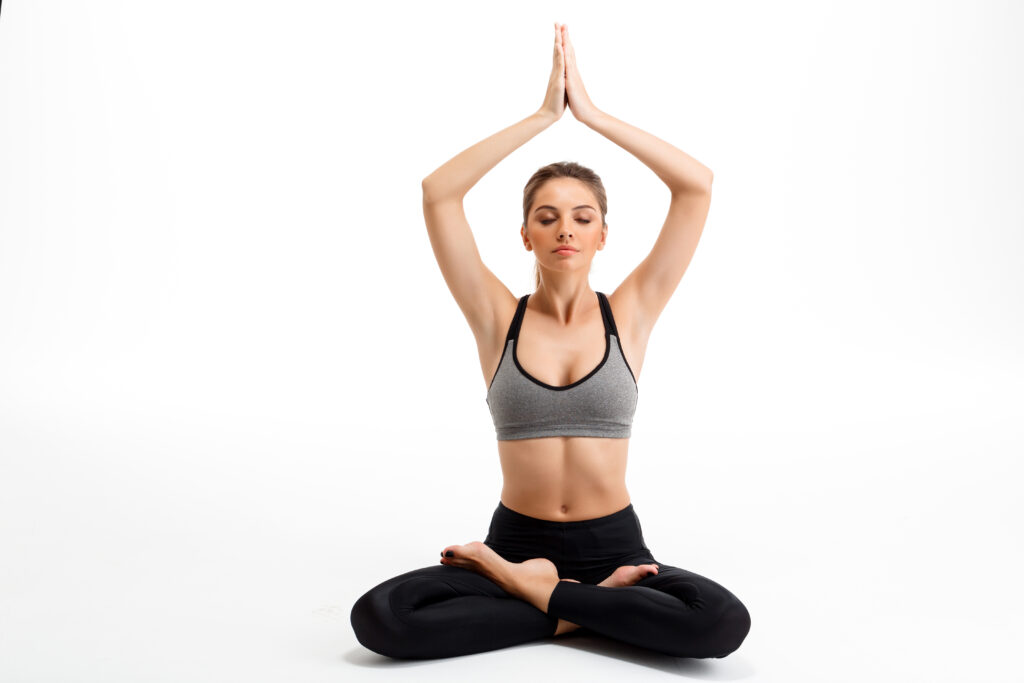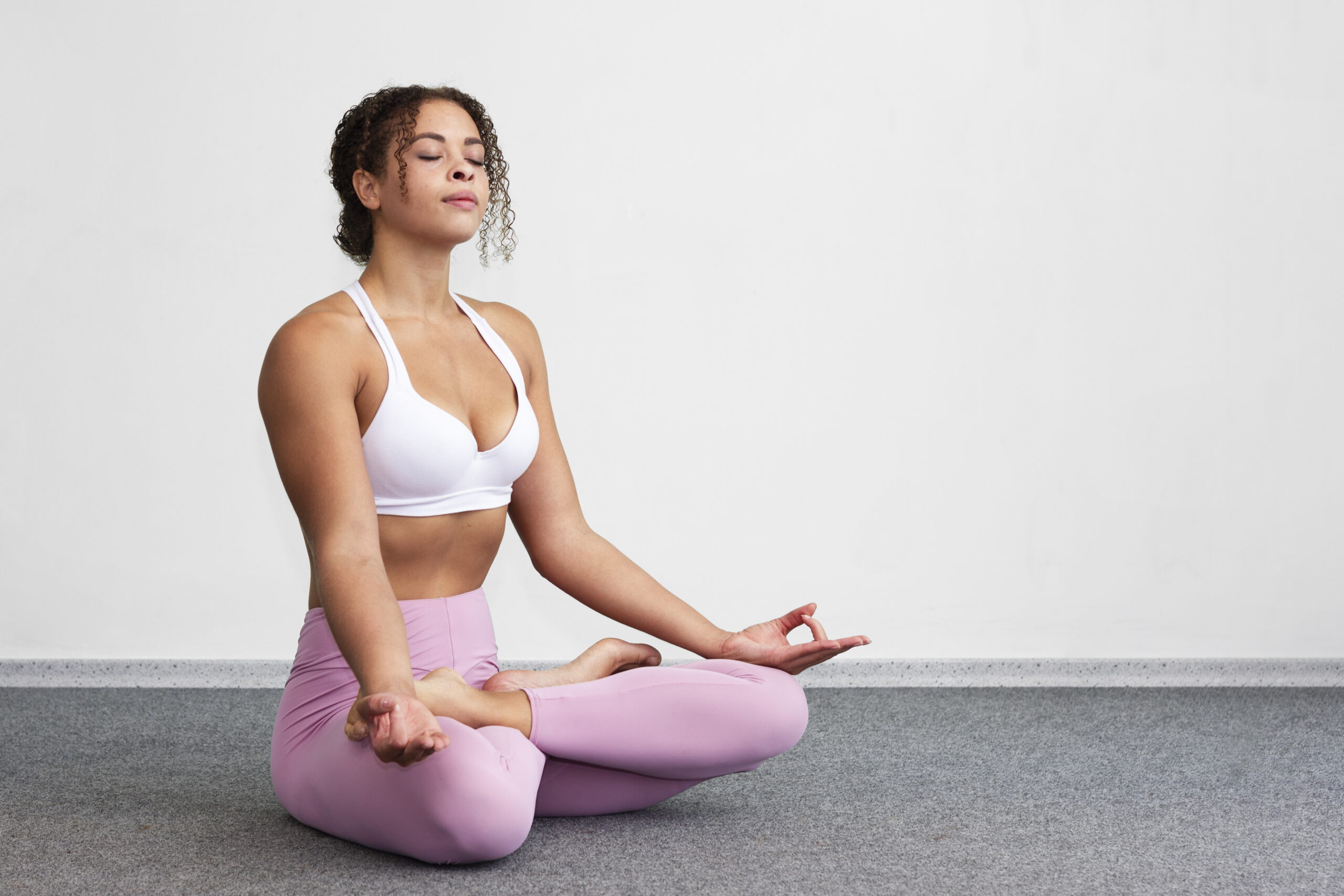Here we are going to share information on the topic “9 health benefits of vajrasana”. Vajrasana is a basic seated posture found in yoga. The Sanskrit word vajra, meaning diamond or thunderbolt, is where the phrase originates.
To relieve the strain on your knees, kneel and then sit back on your legs for this pose. This position is widely used for breathing and meditation activities, and it’s supposed to help make your body as strong as a diamond.

Vajrasana is a well-liked yoga pose that helps us focus our minds and develop our bodies. Other names for it are:
- Thunderbolt Pose
- Diamond Position
- Adamantine
Learn how to perform the Vajrasana stance and discover all of its health advantages by reading on.
9 health benefits of vajrasana
Benefits of Vajrasana
There have been a number of studies that indicate Vajrasana has positive health benefits, including:
1. Good for our Digestive System
Performing vajrasana helps our digestive system in many ways. It obstructs blood flow to our legs and thighs and increases it in our stomach area, thus improving our bowel movements and relieving constipation.
Vajrasana also helps us to get rid of flatulence (gas) and acidity. It ensures better absorption of nutrients by our body.
Normally, any kind of exercise or yoga is not performed immediately after meals. But it is good to perform Vajrasana after meals since it helps with indigestion.
2. Relieves Low Back Pain
By strengthening our lower back muscles, practicing Vajrasana helps relieve periodic pain and discomfort.
It also aids in the relief of sciatica pain.
3. Maintains blood sugar regulation
Additionally beneficial for managing diabetes is vajrasana. It is, in fact, one of the poses that demonstrates the health benefits of yoga for people with diabetes. It improves the body’s capacity to manufacture insulin in the most efficient way by stimulating the pancreas and liver, two abdominal organs. Vajrasana is a great pose for those with diabetes since it can help with short-term improvements in fasting glucose levels.
4. Alleviates Arthritis
Doing Vajrasana improves the flexibility of the muscles in our feet, thighs, and the area surrounding our knees, ankles, and hips. This relieves stiffness-related rheumatic pain in certain locations.
Additionally, vajrasana helps lessen gout and calcaneal spur discomfort in the heel.
5. Makes Pelvic Floor Muscles Stronger
By practicing Vajrasana, we strengthen our pelvic floor muscles and improve blood circulation in the pelvis.
For women who experience stress and urine incontinence, it is therefore helpful. Menstrual cramps and labour pains are also lessened by it.
6. Promotes Mental Calmness
One useful asana for practicing meditation is vajrasana. In this stance, breathing exercises help us relax and improve our emotional health.
Vajrasana helps with stress reduction, attention, and warding off despair and anxiety.
7. Management of High Blood Pressure (High Blood Pressure)
By lowering blood pressure and stress, vajrasana shields us from a number of cardiovascular diseases.
8. Enhances Sleep
Vajrasana practice calms us down and eases our tension and worry. As a result, it facilitates restful sleep.
9. Decreases Obesity
Vajrasana improves digestion and aids in the reduction of abdominal fat. It has been demonstrated to be successful in lowering obesity and BMI (body mass index).
How is Vajrasana performed?
- Begin by bending down on your knees. For comfort, you can sit on a yoga mat.
- After that, take a little seat back on your legs to relieve your knee pressure.
- Sit upright with your buttocks resting on your heels and maintain a four-finger distance between your knees. The thighs of both legs should rest on both calves accordingly, and the big toes of both feet should touch each other.
- Put your hands on your knees, maintain a straight back, look forward with your head and chin parallel to the floor, and stare straight.
- Pay close attention to your breathing as you gradually take in and release air from your lungs.
- Aim to hold this posture for a duration of five to ten minutes. The time can be progressively increased to around half an hour each day.
Warning Signs and Exclusions
- If you have just had knee surgery or are experiencing knee discomfort from an underlying medical issue, you should not undertake vajrasana.
- Vajrasana can be performed by pregnant women; however, they should maintain a wider distance between their knees to prevent straining their abdomen.
- Vajrasana should only be performed by anyone with intestinal issues or hernias under the supervision of a certified yoga instructor.
- This pose should not be done by someone who has back issues, such as disc prolapse (slide disc).
- Vajrasana should not be performed by anyone who has stiffness in their knees, ankles, or feet, or any other related condition.
How to make the Vajrasana stance more comfortable
- Ask your yoga instructor to confirm that you’re performing the Vajrasana stance correctly if you find it uncomfortable. Among the methods you can employ to reduce discomfort are:
- Consider placing a folded blanket or other consistent cushioning under your shins if you are experiencing ankle pain. Arrange the blanket so that your toes protrude over the back.
- If you’re experiencing knee pain, you might want to attempt tucking a blanket or towel under your knees and arranging it across your calves.
- To ease the discomfort of sitting, position a yoga block horizontally between your feet. By supporting some of your weight, this can ease pressure on your ankles and knees.
Conclusion
9 health benefits of vajrasana
In summary, Vajrasana, or the Thunderbolt Pose, has several health advantages, which emphasise its importance in enhancing general wellbeing. It is clear from examining the nine compelling benefits covered in this blog that Vajrasana practice on a daily basis can have a major positive impact on one’s mental, emotional, and physical well-being.
Reiterating what has already been said on the blog, Vajrasana has the following health benefits: better digestion, stronger pelvic muscles, better respiratory function, less stress and anxiety, increased blood circulation, better posture, relief from sciatica pain, help with weight management, and mental focus promotion. A comprehensive strategy for maintaining and enhancing your health is to incorporate this straightforward yet effective yoga stance into your everyday practice.

Frequently asked questions
9 health benefits of vajrasana
1. What is the disadvantage of Vajrasana?
Answer: Yoga practitioners advise against performing Vajrasana if you have recently had knee surgery or suffer from a knee issue. a problem with the spinal cord, particularly the lower vertebrae. intestinal hernias, ulcers, or any other issues related to the intestines.
2. Which pose should one avoid if they have knee pain?
Answer: If a person has knee pain, they might want to stay away from the following poses: Pose of the camel. Triangle Position. Lotus Position.
3. Is it good to sit in Vajrasana for a long time?
Answer: Vajrasana has no time constraints. It will be fine until you can manage. It will be excellent if you can make it to 20 minutes. One of the poses that may be done even after eating is this one.
4. Is Vajrasana better than walking?Who should avoid Vajrasana?
Answer: How to Perform Vajrasana Pose Safely People who have back issues, such as sliding discs, should not attempt this pose. Individuals who experience stiffness in their feet, ankles, or knees should refrain from doing Vajrasana.
5. Is vajrasana equal to walking?
Answer: If vajrasana is done for five to seven minutes, the health benefits are equivalent to those of a long stroll. Vajrasana, or the diamond position, also aids in overcoming varicose veins. This is an excellent way to lengthen life and strengthen the spine.

